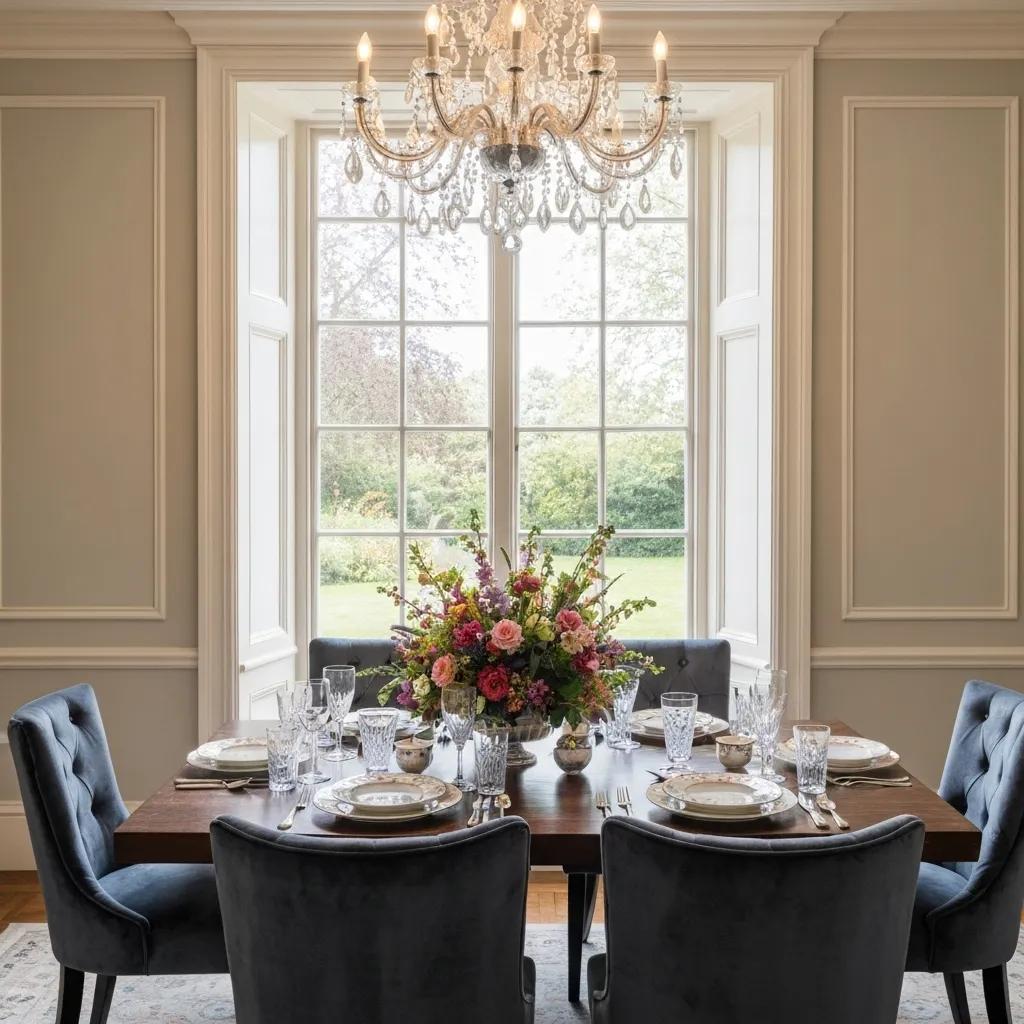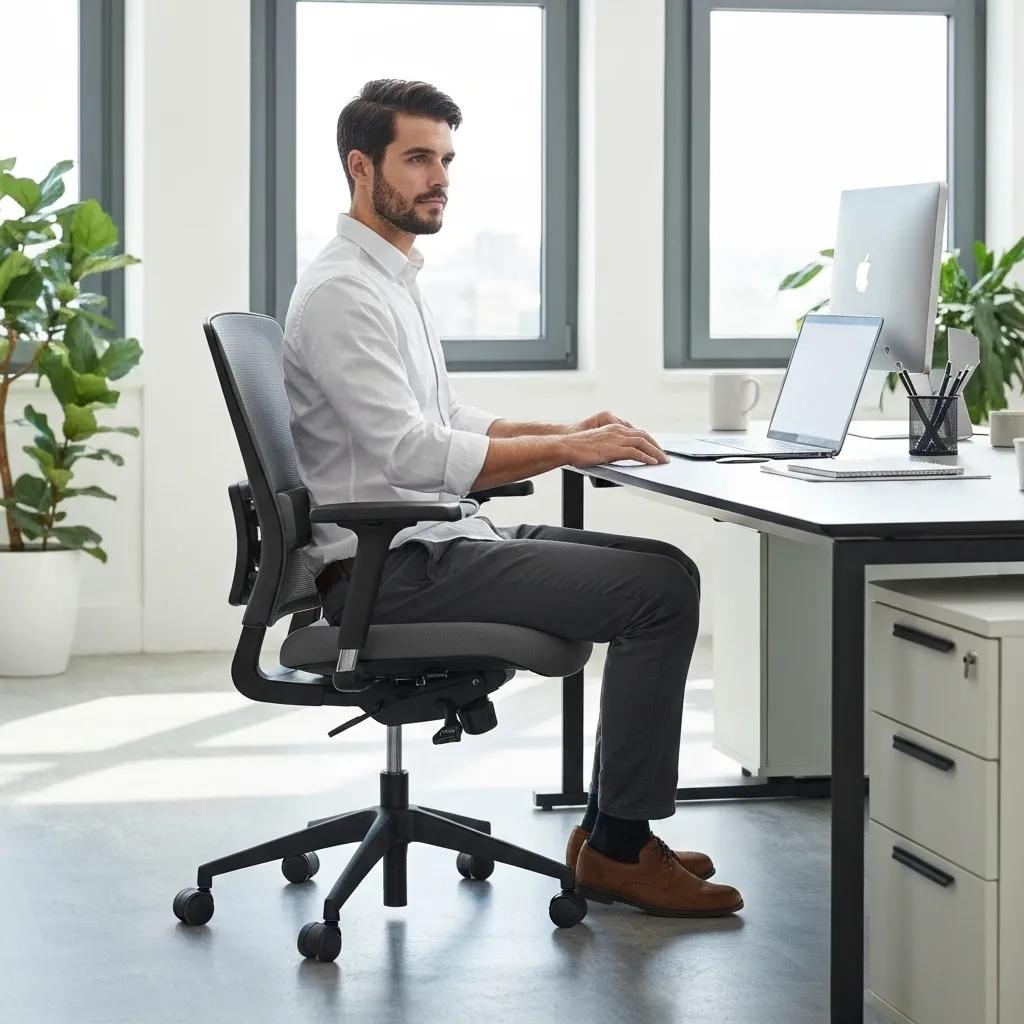Finding Your Perfect Seat: A Comprehensive Guide to Chair Selection
Ever found yourself pondering the ideal chair for your home or workspace, seeking that perfect blend of comfort, enduring style, and robust construction? The right chair is more than just furniture; it’s a cornerstone for good posture, a key element in your room’s aesthetic, and a long-term investment in your satisfaction. This guide will walk you through the primary chair categories, essential material considerations, current style trends, crucial ergonomic features, and smart tips for fitting chairs into any space, ensuring every seating choice enhances your environment.
What Are the Main Types of Chairs and How Do I Choose the Right One?
The type of chair you select fundamentally shapes your comfort and its functional utility. By aligning key features—such as seat height, the level of support offered, and the overall form—with your intended use, you can make an informed decision. Here are the core categories to explore:
- Dining Chairs: Designed to complement your dining table, offering both style and appropriate seat height for shared meals, including versatile extendable dining chairs for adaptable seating.
- Office Chairs: Engineered for extended work sessions, prioritizing adjustable lumbar support and ergonomic adjustments.
- Accent Chairs: Crafted to inject personality and visual interest into a room with their distinctive silhouettes and unique upholstery.
- Lounge Chairs: Built for ultimate relaxation, featuring deep seating, plush cushioning, and often recline capabilities.
By carefully matching each category to the specific purpose of your room, you’ll ensure your chosen chair not only serves its function but also beautifully enhances your decor.
What Defines Dining Chairs and How to Pick the Best for Your Table?

Dining chairs are a harmonious blend of seat height, structural stability, and aesthetic appeal, all designed to elevate your mealtime experiences. Aim for chairs where the seat height is approximately 10–12 inches lower than your tabletop, and opt for materials that are resilient and easy to clean, especially in high-traffic dining areas. For smaller spaces, consider armless designs, while upholstered options can add a welcome touch of comfort. Understanding these elements will make your dining moments both stylish and ergonomically sound, naturally leading us to explore the innovative world of extendable dining chairs, a specialty of PouffeLOVE’s handcrafted collection.
How Do Office Chairs Support Ergonomics and Productivity?

Office chairs are meticulously designed with ergonomic features—including adjustable height, customizable tilt tension, and contoured lumbar support—to alleviate back strain and help you maintain focus. Essential adjustments to look for are seat depth, armrest positioning, and backrest recline. Prioritizing these attributes not only promotes healthy posture but also sustains productivity, which in turn influences your choices for more decorative seating options.
Ergonomic Features in Office Chairs
Ergonomic office chairs are engineered to provide optimal body support and encourage good posture. Key features to seek out include adjustable lumbar support for personalized back alignment, height adjustability for proper leg positioning, and responsive tilt and swivel mechanisms that facilitate natural movement. These integrated features are crucial for reducing physical strain and promoting active sitting during prolonged work periods.
Grandjean, E., Ergonomics in the Design of Office Furniture (1987)
This foundational research underscores the critical importance of ergonomic design in office furniture, supporting the article’s emphasis on how these features contribute to both health and enhanced productivity.
What Makes Accent Chairs Ideal for Adding Style and Personality?
Accent chairs are your go-to for infusing rooms with personality and visual flair, thanks to their unique shapes, distinctive finishes, and eye-catching upholstery patterns. From chic barrel silhouettes to classic wingback designs, available in a spectrum of vibrant fabrics or luxurious leather, accent chairs can dramatically elevate your decor. Choosing one that harmonizes with your existing color scheme and fits your space’s scale will instantly enhance the ambiance, setting the stage for considering comfortable lounge seating.
How to Select Lounge Chairs for Maximum Comfort and Relaxation?
Lounge chairs are the epitome of relaxation, offering deep, enveloping seats, supportive frames, and gentle recline angles designed for unwinding. When selecting a lounge chair, pay close attention to the density of the cushions, the height and contour of the backrest, and the availability of complementary footrest options to ensure maximum comfort. The right lounge chair is an invitation to relax and sets the tone for choosing durable materials that can withstand daily use.
What Chair Materials Should I Consider for Durability and Style?
The materials chosen for a chair significantly influence its longevity, ease of maintenance, and overall aesthetic character, forming its core structure and defining its finish. The table below offers a comparison of popular material options:
By thoughtfully balancing the need for longevity with your desired aesthetic and preferred maintenance routine, you can select a chair that remains inviting and beautiful for years to come.
How Do Wood, Metal, and Fabric Materials Compare for Chairs?
Wood chairs bring a sense of structural warmth and can be revitalized through refinishing. Metal chairs are ideal for high-traffic environments due to their inherent strength and low maintenance needs. Fabric chairs, while offering superior comfort and a wide range of style options, do require periodic attention to stain treatment. Understanding these distinctions will simplify your material selection process to align with your lifestyle requirements.
What Are the Benefits of Velvet, Boucle, and Leather Upholstery?
Your choice of upholstery profoundly impacts a chair’s comfort, how easy it is to maintain, and its overall sense of luxury:
- Velvet: Imparts a rich depth and a sumptuously plush feel.
- Boucle: Delivers a distinctive textured, tactile surface that adds visual interest.
- Leather: Offers exceptional durability and is remarkably easy to clean.
Each of these upholstery options can elevate your room’s aesthetic while guiding you toward appropriate care practices to ensure lasting beauty and wear.
How Does Material Choice Affect Chair Longevity and Care?
Selecting the right material is key to extending a chair’s service life and simplifying its upkeep. Solid wood frames benefit from gentle polishing to maintain their luster, metal finishes resist corrosion with occasional wiping, and upholstery fabrics maintain their appearance longer when regularly vacuumed and spot-cleaned as needed. By tailoring your care routine to the specific material, you can preserve both the chair’s functionality and its stylish appeal for many years.
Chair Material Durability and Care
The material chosen for a chair plays a significant role in its overall durability and the level of maintenance it requires. Wood chairs offer a warm, structural presence and can be refinished to refresh their look. Metal chairs are known for their low-maintenance qualities, while fabric chairs provide comfort and style variety but necessitate regular cleaning. Adhering to proper care practices specific to each material is essential for maximizing the chair’s lifespan.
De Castro, J. M., The Psychology of Furniture (2019)
This research provides valuable insights that reinforce the article’s recommendations on selecting chair materials, emphasizing the importance of considering both their inherent durability and the necessary care requirements.
How Do I Choose Chairs Based on Style: Modern, Scandinavian, and Premium Craftsmanship?
Style is the visual narrative of your space, and your chair choice is a key chapter in that story, connecting form to the overall ambiance. Consider these three distinct approaches to style:
- Modern chairs: Characterized by clean lines, minimal embellishments, and often feature materials like metal or molded plastics.
- Scandinavian chairs: Defined by their use of light woods, functional and streamlined silhouettes, and a preference for muted color palettes.
- Premium Polish craftsmanship: Distinguished by meticulous hand-finished joints, exquisite veneers, and enduring, classic detailing.
By aligning your chair selection with your interior design philosophy, you ensure each piece contributes to a cohesive and character-rich environment.
What Are the Key Features of Modern and Mid-Century Modern Chairs?
Modern and mid-century modern chair designs are notable for their geometric forms, slender legs, and innovative use of composite materials. Expect to see tapered wood or metal frames, ergonomically sculpted curves, and a strong emphasis on simplicity, allowing them to integrate seamlessly into contemporary living spaces.
Why Are Scandinavian Chairs Popular for Functionality and Minimalism?
Scandinavian chairs have gained popularity for their masterful combination of lightweight construction, ergonomic contours, and understated finishes, all designed to maximize comfort without creating visual clutter. Their reliance on sustainable woods and straightforward, clean lines makes them exceptionally versatile and well-suited to a wide range of interior styles.
What Defines Premium Polish Craftsmanship in Chair Design?
Premium Polish craftsmanship is evident in the precision of its joinery, the subtle elegance of its inlays, and the superior quality of its natural finishes. Each piece is a testament to meticulous attention to structural integrity and aesthetic harmony, promising both exceptional durability and refined, timeless style.
How Can I Ensure Comfort and Ergonomics When Choosing a Chair?
Achieving optimal comfort and ergonomics hinges on selecting chairs that offer tailored support, possess adjustable components, and feature dimensions proportionate to your body and the tasks you’ll perform. Addressing these elements is crucial for maintaining your physical well-being and enhancing your daily performance.
What Ergonomic Features Should I Look for in Office and Adjustable Chairs?
When selecting ergonomic office or adjustable chairs, prioritize these key features:
- Adjustable lumbar support: Essential for maintaining the natural curvature of your spine.
- Height modification: Allows for correct thigh alignment relative to your desk or table.
- Tilt and swivel mechanisms: Encourage subtle movement, promoting better circulation and reducing stiffness.
These features collectively contribute to sustained good posture and improved circulation during extended periods of sitting.
How Do Chair Dimensions and Body Type Influence Comfort?
A chair’s comfort is significantly influenced by how well its dimensions—including seat width, depth, and backrest height—correspond to your individual anatomy. A chair that appropriately accommodates your hip breadth and provides adequate support for your shoulder height will effectively reduce pressure points and foster a more comfortable seating experience.
What Are the Benefits of Adjustable Chairs for Different Uses?
Adjustable chairs offer remarkable versatility, adapting to various users and tasks through customizable height, tilt, and armrest positions. This adaptability significantly enhances comfort whether you’re dining, working, or simply relaxing, and contributes to long-term well-being by allowing for personalized ergonomic support.
How Do I Match Chairs to My Space and Usage Needs?
Selecting the right chair for a specific space involves a careful balance of scale, intended function, and the room’s traffic flow. By tailoring your choices to these factors, you can ensure both aesthetic harmony and practical performance in every area of your home or office.
What Chairs Work Best for Small Spaces and Multi-Functional Rooms?
For smaller areas or rooms that serve multiple purposes, compact chairs with armless profiles or those featuring folding capabilities are ideal for maximizing space and mobility. Consider stackable designs or slim-profile chairs that provide necessary seating without overwhelming the room.
How to Choose Chairs That Complement Different Room Types?
It’s essential to match materials and styles to each room’s specific function: opt for robust, easy-to-clean finishes in dining areas; select plush, supportive designs for lounge spaces; and choose streamlined, adjustable models for home offices. Maintaining consistency in color or leg finish across different seating pieces can help unify varied styles into a cohesive aesthetic.
What Are the Latest Chair Trends for 2025 in Ergonomics and Sustainability?
Current trends in chair design are heavily focused on advanced ergonomic features, such as integrated neck rests and responsive memory-foam cushions, alongside a strong commitment to sustainability. This includes the use of eco-friendly materials like recycled aluminum frames and certified sustainable woods. These innovations represent a forward-thinking approach that merges health benefits with a reduced environmental footprint.
Choosing the perfect chair is a thoughtful process that requires aligning the type, material, style, ergonomic considerations, and spatial requirements. By applying these comprehensive guidelines, you can confidently select seating that not only supports your body and reflects your personal taste but also proves durable and functional for everyday life. Embrace the comfort and character that a well-chosen chair brings to every corner of your home or office.
